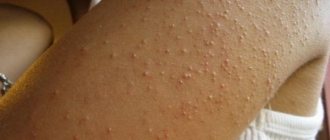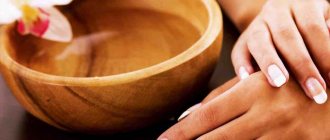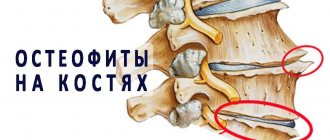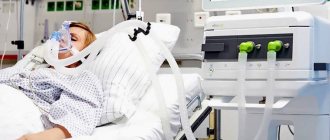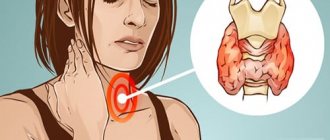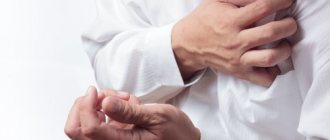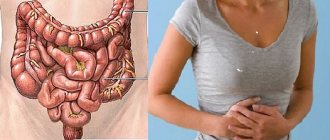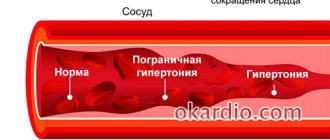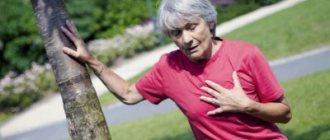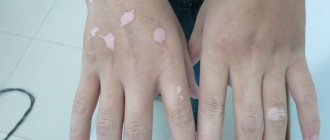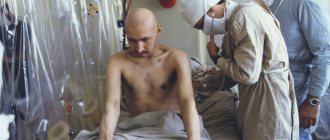Mycosis is a fungal disease widespread throughout the world that occurs when infected with fungi of various types. In some cases, this pathology can become chronic and cause serious allergic reactions, including eczema.
Skin lesions associated with fungi cause a lot of inconvenience to patients, creating a clear cosmetic defect. With mycotic eczema, exposed areas of the skin are affected, they itch, and painful cracks may appear. Fungal eczema must be treated, otherwise the pathological process can spread, affecting large areas of the skin.
Definition
Damage to the toes by mycotic eczema
Mycotic eczema is a skin disease that occurs due to infection with a fungus and is complicated by an allergic reaction. This disease is a type of microbial eczema and usually appears on the skin of the feet and hands, between the fingers; it is chronic and requires regular therapy.
Some types of fungi, getting into small wounds on the arms and legs, begin to actively multiply and provoke an inflammatory process in the tissues of the epidermis. The body reacts to this pathology with severe dermatitis; pink plaques appear on the skin, which peel, itch and hurt.
Therapy
Let's move on to talk about how to treat weeping eczema on the legs, arms and other parts of the body. It should be immediately clarified that therapy for this disease takes a long period of time. In addition, the main difficulty of treatment is associated with the difficulty of identifying the pathogen. Medicines belonging to the group of antibiotics are used against microbial pathologies. However, these medications are part of complex measures aimed at eliminating the disease itself.
When treating weeping eczema, it is necessary to first identify the pathogen and try to exclude possible contacts. To do this, you should stop eating certain foods and avoid direct contact with household chemicals and some plant components.
In order to reduce the body's sensitivity to allergens, the use of intravenous injections of drugs such as Calcium Chloride and Calcium Gluconate will be required. To eliminate inflammatory processes, antihistamines (Zyrtec) and corticosteroid drugs (Dexamethasone) are used.
It is very important to pay attention to removing toxins and waste from the body. For this purpose, intravenous solutions are used, as well as medications such as Polysorb and Enterosgel. Complex treatment includes the use of various external agents. Hormonal ointment for weeping eczema “Hydrocortisone” shows high effectiveness in reducing the severity of the main symptoms.
To increase the body's protective functions, drugs containing interferon are used. Such medications include Cycloferon and Viferon. In addition to them, you should take multivitamin complexes that contain all the necessary components to correct the functioning of the immune system.
Causes
The following fungi provoke mycotic eczema:
- Candidiasis;
- Lichen;
- Trichophyton;
- Epidermophyte.
When the above pathogens enter the body, eczema does not always develop; it can be triggered by the following negative factors:
- Wounds and abrasions on the skin that allow the fungus to penetrate inside;
- Weakened immune system, vitamin deficiency;
- Chronic diseases of the nervous and endocrine systems;
- Metabolic disorders and digestive problems;
- Vascular pathologies, for example, varicose veins, venous insufficiency, trophic ulcers.
Symptoms
The disease has severe symptoms, redness of the skin and itching appear, and over time small blisters appear on the skin, which burst and leave painful wounds. At the same time, the integument peels off and becomes rough, small cracks form, especially on the delicate skin between the fingers.
Over time, the pathological process fades away as the body fights the infection. The skin dries out and pink spots remain, the rough layers of skin flake off and flake off completely. But at this stage of recovery there is no recovery; as a rule, new foci of inflammation appear in other areas of the skin.
Often, small wounds that form during mycotic eczema can become inflamed and fester; if in this case treatment is not started immediately, sepsis may occur - blood poisoning. Sepsis is a serious complication that affects the entire body and can even lead to death. In addition, suppuration of the wound in severe cases can lead to gangrene and amputation of the limb.
To avoid serious complications, it is necessary to contact a dermatologist and mycologist as soon as possible at the first symptoms of the disease. Early diagnosis and adequate treatment will help quickly get rid of unpleasant symptoms and reduce the risk of relapse of mycotic eczema.
Symptoms of weeping eczema by type
Doctors distinguish several types of illness. Of course, they are all accompanied by skin erosion, but various factors can provoke the pathological process. So, the classification is as follows:
1. True eczema:
- all stages are expressed;
- the boundaries of the lesions are poorly defined;
- it is difficult to determine the allergen that caused the rash.
2. Microbial:
- appears due to the pathogenic activity of bacteria;
- clear boundaries;
- In addition to serous exudate, pus is also formed.
3. Mycotic:
- the reason is an allergy to a fungal infection;
- clear boundaries;
- difficult to treat due to fungal resistance.
4. Seborrheic:
- develops against the background of seborrhea - increased function of the sebaceous glands;
- spots in the form of rings and garlands form on the skin.
5. Professional:
- people whose work involves chemicals often suffer;
- all signs of the true form.
6. Dyshidrotic:
- localized on the palms and soles;
- redness of the skin is mild;
- the vesicles can fuse to form large vesicles;
- often spreads to the nails, hands and feet.
7. Tilotic:
- also develops on the palms and soles;
- calluses form in place of the blisters.
8. Children's:
- the weeping stage is most pronounced;
- often develops against the background of artificial feeding;
- Deaths from eczema in infants have been recorded.
9. Varicose:
- localized in the area of veins dilated due to varicose veins;
- clear boundaries;
- moderate itching;
- sometimes confused with microbial eczema.
10. Sycosiform:
- occurs against the background of inflammation of the hair follicles - sycosis;
- severe itching;
- lichenification of the skin develops rapidly.
11. Nipple eczema:
- crimson lesions;
- crusts layer and crack;
- clear boundaries (around the nipples);
- difficult to treat;
- often results from trauma during breastfeeding.
As can be seen from this list, weeping eczema occurs for various reasons. And although it is based on a pathological immune response to irritants, the symptoms of the disease do not manifest themselves in the same way.
In some cases, skin erythema is not observed at all, in others, the stages of vesicle formation or the release of serous exudate are acutely expressed, in others, lesions form only as a consequence of another disease. In general, the therapeutic course will depend on the diagnosis.
Diagnostics
As a rule, an experienced doctor can diagnose mycotic eczema during the first examination of the patient. The rashes characteristic of this particular disease are immediately noticeable; in addition, the patient voices complaints that bother him. They usually confirm the presence of eczema.
Tests will help confirm the diagnosis and establish the cause and stage of the disease. Usually, the doctor prescribes a scraping from the affected areas of the skin, with the help of which fungi are detected in the laboratory. There they also determine the type of pathogen that needs to be known for adequate treatment.
If the doctor suspects endocrine disorders, the patient must be sent for a consultation with an endocrinologist, and if there are signs of damage to the nervous system, treatment by a neurologist will be required. In both cases, doctors prescribe additional treatment that eliminates the main problem of eczema.
Treatment of microbial eczema on the hands
If microbial eczema on the hands is diagnosed, treatment involves the use of hyposensitizing medications (antihistamines and sedatives). They will have a calming effect and relieve unpleasant symptoms. Taking vitamins will help activate regeneration processes. In some cases, vitamins are administered intramuscularly.
In severe cases, the doctor will prescribe glucocorticosteroid ointments, which quickly stop the relapse, but can cause side effects. Therefore, after acute symptoms are relieved, they are replaced with non-hormonal ointments that have antiseptic, anti-inflammatory and antipruritic properties. Such products include Losterin.
Treatment
Mycotic eczema is quite difficult to treat, since fungi are very tenacious microorganisms that are not so easy to get rid of. The patient is prescribed complex therapy, which includes taking various medications, as well as special procedures.
Therapeutic
Therapeutic treatment consists of following the following recommendations:
- It is necessary to cover the rashes with bandages or clean clothes made of natural fabric to avoid dust getting into them and the development of suppuration;
- Avoid exposing the affected areas to direct sunlight;
- It is necessary to prevent chemicals from coming into contact with the rash;
- It is necessary to follow an anti-allergenic diet (it is forbidden to eat foods such as oranges, strawberries, honey, nuts, it is also necessary to limit the amount of salt in the diet and exclude smoked, canned, fried and fatty foods);
- Eczema can be aggravated by stress, so the patient is advised to avoid such situations and not be nervous;
- It is necessary to try to avoid contact with various allergens, detergents, and pollen; when working in summer cottages, you need to cover your skin well.
Therapeutic treatment is often combined with the use of folk remedies.
Medication
Treatment with medications for mycotic eczema should be prescribed by an experienced doctor, this is very important. The fact is that allergic reactions can increase significantly if the patient takes medications in the wrong doses. In addition, not all medications are suitable for mycotic eczema; in each specific case, the doctor must individually select medications and calculate dosages.
The following types of drugs are usually prescribed:
- Antifungal agents. At the initial stage of the disease, the doctor may prescribe an antifungal ointment, but if the rash affects large areas, then the use of drugs orally is indicated.
- Antihistamines are prescribed to relieve the allergic manifestations of mycotic eczema.
- Herbal sedatives have a mild sedative effect. Eczema often progresses against the background of increased nervous excitability; sedatives help to avoid this.
- A solution of boric acid is prescribed to treat rashes and speed up their healing.
- Corticosteroids may be indicated for mycotic eczema against the background of endocrine disorders; they are prescribed in the form of ointments.
Folk
Folk remedies will help relieve itching and speed up skin healing; before using them, you must undergo an examination; you should not self-medicate, as serious complications are possible.
Effective recipes for mycotic eczema:
- An ointment made from cranberry juice, lanolin and petroleum jelly is very effective for eczema; mix the substances in a 1:1 ratio and apply to painful areas in the morning and evening.
- Sea buckthorn oil can be used to speed up skin regeneration.
- Ointments containing propolis have a good healing effect.
- Chamomile has an excellent anti-inflammatory effect. Chamomile flowers can be used to prepare decoctions, make lotions and baths. A tincture of dried flowers and vegetable oil is very effective. Usually the flowers are crushed, poured into a jar and poured with olive oil, and left for at least a week. The resulting product should be applied to the affected areas of the skin.
- For weeping eczema, Kalanchoe juice is very effective. To prepare lotions, you need to use large leaves of the plant, from which the juice is squeezed onto a clean cloth. The soaked napkin should be applied to the sore spot for no more than 5 minutes, the procedure should be repeated daily until recovery.
- Also, with weeping eczema, a decoction of viburnum berries helps well, from which you need to make daily lotions.
- Cabbage leaf is a very simple and effective remedy that helps relieve inflammation in tissues and reduce itching. It is necessary to pick a fresh leaf from the head of cabbage and wash it, then mash it a little so that it releases the juice and apply it to the sore spot, securing it with a bandage on top.
"Weeping eczema
Wet dermatitis, purulent-traumatic dermatitis, summer eczema, focal itching are synonyms for the diagnosis of “weeping eczema” of the skin.
Most likely, this term originally came to veterinary medicine from human medicine.
Eczema in medicine is an inflammatory skin lesion characterized by erythematous-vesicular itchy rashes, the exact mechanism of development of which has not been fully established.
The main theories of its occurrence are allergic and neurogenic. There are certainly differences in the clinical presentation and etiopathogenesis of eczema in dogs and in humans.
In dogs, eczema can be classified as a disease included in the group of superficial pyoderma. Labradors, retrievers, Bernese mountain dogs, German shepherds, Central Asian shepherds and other thick-haired breeds are predisposed.
Clinically, weeping eczema manifests itself in the form of limited skin lesions, with a weeping surface, hyperemic, itchy and painful. As a rule, it occurs in the torso area, the ventral surface of the neck, the base of the ears, and on the skin of the extremities.
Summer eczema occurs mainly with a warm and humid season. Excessive licking of a local area of skin by an animal can also be a cause of weeping eczema. For example, in case of skin injury, allergic reaction, psychogenic dermatitis (acrodermatitis from licking), etc.
Eczema can occur as a result of scratching the area of the auricle, in the presence of otitis media of various origins. Thus, weeping eczema can be considered a polyetiological disease.
Diagnosis of this disease consists of medical history (feeding the dog, keeping, treatment for ectoparasites, etc.) and examination of the patient, diagnostic data (clinical blood test, cytological examination, scraping examination, sometimes histological examination and bacterial culture from the surface of the skin).
As a rule, the disease is caused by Staphylococcus intermedius , less common are streptococci, Proteus, and there are mixed infections. In principle, any conditionally pathogenic microflora of the skin can become involved in the pathological process, since the skin loses its protective properties.
Weeping eczema should be differentiated from folliculitis, dermatomycosis, candidiasis, parasitic infections, etc. Treatment consists, first of all, of mechanical treatment of the weeping surface and preventing licking (combing) of the affected area, prescribing external treatments, antimicrobial and anti-inflammatory drugs, as well as correcting the diet.
Source: https://aldenvet.ua/moknushhaya-ekzema/
Prevention
Complication of mycotic eczema
Mycotic eczema is a chronic disease and tends to recur regularly. How long the remission will last depends on the patient himself, on how well he follows preventive measures. Eczema can be complicated by a long course and rashes all over the body, and wounds on the skin often become infected, suppuration appears, and in advanced cases, sepsis develops.
Prevention of relapses of mycotic eczema lies in the correct lifestyle. The patient needs to eat a balanced diet, excluding the consumption of allergenic foods, exercise regularly, harden and strengthen the body’s immunity in every possible way.
It is also very important to monitor the condition of the skin, immediately treat wounds and treat any rashes on the integument. Avoid exposure to household chemicals; all manipulations must be carried out with gloves. It is necessary to maintain personal hygiene, regularly wash your hands and the whole body.
